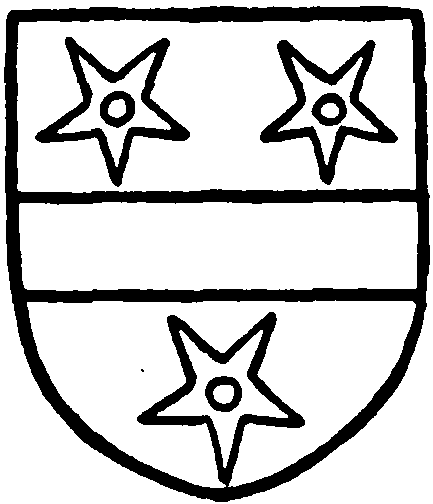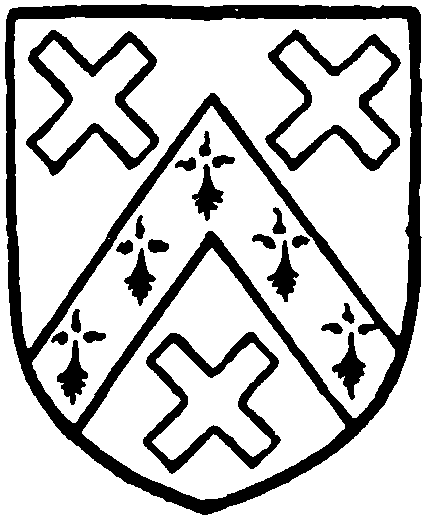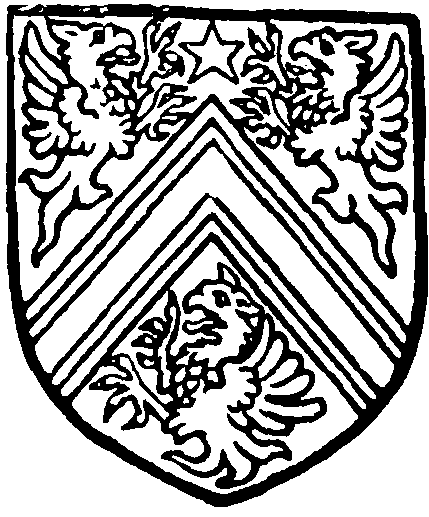A History of the County of Buckingham: Volume 3. Originally published by Victoria County History, London, 1925.
This free content was digitised by double rekeying. All rights reserved.
'Parishes: Drayton Parslow', in A History of the County of Buckingham: Volume 3, ed. William Page( London, 1925), British History Online https://prod.british-history.ac.uk/vch/bucks/vol3/pp345-348 [accessed 15 January 2025].
'Parishes: Drayton Parslow', in A History of the County of Buckingham: Volume 3. Edited by William Page( London, 1925), British History Online, accessed January 15, 2025, https://prod.british-history.ac.uk/vch/bucks/vol3/pp345-348.
"Parishes: Drayton Parslow". A History of the County of Buckingham: Volume 3. Ed. William Page(London, 1925), , British History Online. Web. 15 January 2025. https://prod.british-history.ac.uk/vch/bucks/vol3/pp345-348.
In this section
DRAYTON PARSLOW
Draintone, Draitone (xi cent.); Draitone Passele (xiii cent.); Draygtone Passelewe (xiv cent.); Draighton Perselow (xvii cent.).
The parish of Drayton Parslow covers an area of 1,749 acres, comprising 377 acres of arable land, 1,243 acres of permanent grass, and 15 acres of woods and plantations. (fn. 1) The subsoil is of Oxford Clay. Gravel and sand were formerly worked here. The highest point of elevation (500 ft. above the ordnance datum) is in the west.
The village, which is small, lies to the east of the road from Wing to Mursley. The church with the adjacent rectory-house occupies a position to the south-west. There are several 17th-century thatched cottages, and a Baptist chapel built in 1830, and a Primitive Methodist chapel dating from 1847. A mound half a mile south-west of the church is possibly the remains of a fortification thrown up by the Passelewes in the 12th or 13th century.
The Inclosure Award for Drayton Parslow, dated 7 July 1798, under the Inclosure Act of 1797, is in the custody of the clerk of the peace. (fn. 2)
Archdeacon Sharrock, son of Robert Sharrock, rector of Drayton Parslow from 1639 to 1642, was baptized here in 1630. He published several books, the first one being a History of the Propagation and Improvement of Vegetables in 1660. (fn. 3)
MANORS
In the time of Edward the Confessor Lewin de Nuneham held 2 hides and 1 virgate in DRAYTON PARSLOW as a manor, and after the Conquest he still held it for a time. (fn. 4) Before 1086 the Bishop of Coutances disseised Lewin's tenant and put into possession Nigel de Berevile, who is described in Domesday Book as holding directly of the king. (fn. 5)
Ralph Passelewe (Passaquam), the tenant ejected by the Bishop of Coutances before 1086, (fn. 6) appears to have regained possession, as his descendant Hamon Passelewe held lands in Drayton about the end of the 12th century. (fn. 7) His son Ralph in 1222 granted the Abbot of Woburn common of pasture in Stewkley when the fields of Drayton on the south lay fallow each alternate year. In return the abbot gave Ralph a messuage in Drayton formerly held by William de Porta. (fn. 8) This transaction with the Abbot of Woburn, who also held part of Drayton Parslow in fee, appears to have been used by him as a pretext to acquire the overlordship of the Passelewes' lands, for on the death of Ralph Passelewe about 1242 the abbot claimed the custody of his son and heir John. (fn. 9) The abbot alleged that the premises were formerly held of William de Lenn, who conveyed his right to the abbots. Lucy, Ralph's widow, called upon William de Curly, who claimed the wardship as belonging to a minor, the son and heir of Richard de Peche, in Curly's custody. Lucy Passelewe finally obtained the wardship for a grant of 80 marks to the abbot. (fn. 10) In 1286 the manor was said to be held of William de Newcourt with Roger Golafre as mesne between him and the Passelewes, (fn. 11) but on the death of a Passelewe in 1349 the Abbot of Woburn again asserted his right as overlord to the custody of the heir, a minor, (fn. 12) and was confirmed in his claim by the Crown in 1353. (fn. 13) From this date up to the Dissolution the abbots retained the position of overlords, (fn. 14) and in 1561 the heir to the manor was able to escape wardship and homage by referring to the ancient tenure. (fn. 15)

Passelewe. Argent a fesse between three pierced molets azurc.
The John Passelewe whose minority in 1242 gave the abbot his opportunity (fn. 16) was still under age in 1254 when his mother Lucy Passelewe claimed view of frankpledge in Drayton. (fn. 17) In 1278 John asserted his right to view of frankpledge and assize of bread and ale, (fn. 18) but could bring no proof in 1286 but that of immemorial custom. (fn. 19) His wife Lucy survived him, but it was probably his son, another John Passelewe, who in 1302 was holding Drayton Parslow, so called for the first time. (fn. 20) He died before 1308, in which year his mother Lucy had some trouble with his widow Margaret as to their respective dower. (fn. 21) His kinsman and heir Nicholas (fn. 22) held the manor until his death in 1349, when he was succeeded by his son Robert, then aged fifteen. (fn. 23) It seems probable that Robert Passelewe died before 1379, leaving a widow Isabel, by that date the wife of John Widevill, and a daughter and heir Elizabeth, who married William Purcell, for the Purcells settled the manor on themselves and the heirs of Elizabeth in 1379, paying a life rent to Isabel of £18 15s. 10d. and forty fowls. (fn. 24) William Purcell was still in possession in 1391, (fn. 25) but by 1461 the manor had passed to John Spycer alias Purcell son of Robert Spycer, who conveyed it in that year to William Lacon, (fn. 26) a descendant of Nicholas Passelewe. (fn. 27) In 1536 Thomas Lacon grandson of William died seised of the manor, leaving a son and heir Richard, (fn. 28) who died in 1543. He was succeeded by his son Roland, a minor, (fn. 29) who was still holding Drayton in 1570. (fn. 30) By 1590 Drayton had passed to Robert Fitz Hugh, one of whose daughters and co-heirs, Mary, married William Astrey in that year. (fn. 31) Fitz Hugh made a settlement of the manor on himself and wife Elizabeth for life, with reversion of part to William Astrey, but as he denied the settlement and committed waste in the manor, Astrey brought an action against him in 1597. (fn. 32) The manor is not mentioned again, but it probably became merged into the other manor of Drayton Parslow, the descent of which is given below.
Three virgates in Drayton, which had been held in the time of King Edward by two brothers, men of Alward Cilt, by 1086 were appurtenant to the fief of the Bishop of Bayeux, (fn. 33) and later escheated with it to the Crown. (fn. 34) They may be identical with the half fee held in Drayton in the early 13th century by Peter de Newinton, (fn. 35) and by him afterwards subinfeudated. (fn. 36) His daughter and heir Joan, the wife of William de Kalwedon, in 1253 alienated part of her rights in Drayton to Peter Passelewe of Wavendon, (fn. 37) in whom they were vested in 1278. (fn. 38) She retained the remaining rights of overlordship which she or her successor held in 1278 as the heirs of Peter de Newinton, but at this date the Lisles occupied the extraordinary position of mesne lords between Newinton's heirs and the holder-in-fee (i.e. the Abbot of Woburn), and also of mesne lords between the Crown and Newinton's heirs. (fn. 39) The interest held in Drayton by Newinton's heirs appears to have lapsed later, but the Lisles retained the position of overlord, which they occupied in 1284 with William Passelewe of Wavendon as intermediary between them and the holder in fee. (fn. 40)
At the Dissolution this property escheated to the Crown, by which it was annexed to the honour of Ampthill, (fn. 41) and granted in 1562 to hold of the manor of East Greenwich. (fn. 42) The last mention of the overlordship occurs in 1607. (fn. 43)
Roger, the tenant in 1086, (fn. 44) was succeeded by Peter de Newinton, holding in the early 13th century, (fn. 45) but by 1236 Peter had subinfeudated the estate to the Abbot of Woburn, (fn. 46) who is mentioned as early as 1222 as holding property in Drayton. (fn. 47) In 1254 the abbot was said to hold view of frankpledge here, (fn. 48) and mention of his windmill is made in 1278. (fn. 49) The property continued in the abbey until the Dissolution. (fn. 50) It was retained by the Crown, during whose tenure it became known as DRAYTON PARSLOW MANOR (fn. 51) until 1562, when John Fortescue obtained a grant in fee. (fn. 52) He died in 1607, and was succeeded by his son Sir Francis, (fn. 53) who died in 1624, leaving a son and heir John. (fn. 54) The latter was created a baronet in 1636, (fn. 55) and held Drayton until his death in 1656. (fn. 56) He was succeeded by his son John, (fn. 57) who died in 1683. (fn. 58) His son, another John, succeeded him, and died in 1717 without issue, (fn. 59) when the manor passed to his cousin Sir Francis Fortescue, who died in 1729 without issue. (fn. 60) The manor then passed to Thomas Whorwood, son of Elizabeth daughter of John Fortescue, the second baronet. (fn. 61) On his marriage with Elizabeth Ord in 1737. Thomas Whorwood settled an annuity on her of £100, (fn. 62) and died in 1751, leaving a daughter and heir Elizabeth, who married Charles Greenwood. (fn. 63) The estate was heavily mortgaged and part was sold to pay off debts, with the result that Elizabeth Whorwood widow had some difficulty in obtaining her annuity in 1771. (fn. 64) The Greenwoods continued to hold the manor, (fn. 65) and Charles Greenwood their son was in possession in 1783, (fn. 66) but alienated it some time after 1816. (fn. 67) Robert Lord Carrington owned Drayton some time before 1838, (fn. 68) and it has descended to his grandson, the present Marquess of Lincolnshire.

Greenwood. Sable a cheveron ermine between three saltires argent.

Carrington, Marquess of Lincolnshire. Or a cheveron coupleclosed between three demigriffons sable with a molet gules for difference.
CHURCH
The church of THE HOLYTRINITY consists of a chancel 21 ft. by 15 ft. 6 in., nave 36 ft. 6 in. by 22 ft. 3 in., west tower 7 ft. 6 in. by 7 ft. 9 in., and a south porch. The walls of the chancel and nave are of small rubble, the original dressings being of clunch, and those of the tower and south porch are of squared blocks in courses, and have been considerably restored. The nave walls have moulded parapets, and the east and west walls are continued north and south as buttresses. All the roofs are tiled.
The church is apparently almost entirely of early 15th-century date, but in 1863 the chancel was lengthened about 6 ft., the original east window being re-used, and the whole building was restored.
The chancel (fn. 69) is lighted from the east by a window of three cinquefoiled lights with tracery above in a pointed head, and from the north by a window of two trefoiled lights with a quatrefoil in a pointed head. Both these windows are much restored. There is a modern two-light window in the south wall with the inner sill lowered to form a sedile, westward of which is a window similar to that in the north wall, but almost entirely modern; between them is a modern doorway, and to the east of the doorway a rectangular locker, the door of which contains a 17th-century panel enriched with a guilloche decoration. The chancel arch is of two orders, the inner being chamfered and resting on moulded corbels, beneath which are carved heads and figures holding shields; the outer order is hollow chamfered and dies into the wall on the east side, but stops on chamfered jambs on the west side.
The nave has two windows on either side, each of two cinquefoiled lights with a sexfoil in a two-centred head. The north-east of these windows contains some fragments of old glass, including a shield charged with a lion rampant; other fragments in the south-east window include a shield, Ermine on a fesse azure a crosslet between two lozenges or, besides parts of a figure and some canopy work. Between the windows in each wall is a doorway with a continuously moulded two-centred head and jambs; the south doorway contains an old door, portcullis-framed internally and having five wide battens externally, which retains its original strap hinges. In the east wall, south of the chancel arch, is a large rectangular chamfered recess and, low down in the south wall, at the east end is a small rebated locker.
The west tower is of two stages with a moulded parapet and diagonal western buttresses. The tower arch is two-centred and of three chamfered orders; the outer order on the east side is segmental and continuous, but the remainder die into the walls. The west window, which is much restored externally, is of two trefoiled lights with a quatrefoil in a twocentred head. Above it in the same stage is a small rectangular loop. The upper stage has in each face a window of two trefoiled lights in a square head; the window on the south side is entirely modern externally. In the north and south faces, on the stringcourse below the parapet, are gargoyles crudely carved as human faces.
The south porch is gabled and has diagonal southern buttresses; the outer arch, of two continuously chamfered orders, has been restored and recut. In the east wall is a plain rectangular window, and along this wall the old stone seat remains. The porch roof retains some original timbers, but the remaining roofs are modern; that of the nave is carried by the original semi-octagonal corbels.
At the west end of the nave, in a Purbeck marble slab, is a brass with an inscription in black letter to Benet Blakenolle and Agnes his wife, both of whom died in 1535; the slab contains the indents of two figures with scrolls above, and of those of three sons and eleven daughters. The brasses of the sons and daughters are preserved in the rectory. In the chancel floor is a slab with an inscription to Thomas Whorwood, the date of which, apparently 1751, is rather doubtful, as the slab is broken into six pieces.
The 15th-century font is hexagonal, with sunk panelled sides surmounted by cinquefoiled ogee projecting canopies crocketed and with poppy-head finials; the bowl is moulded and embattled, and has on each angle a shield, three of which are charged with a cheveron between three lions' heads, two, bendy sinister in chief a lion passant, and one, the reverse of the last.
There is a ring of three bells: the treble and second by Taylor of Loughborough, 1842; the tenor by Bartholomew Atton, 1591; and a sanctus dated 1669.
The plate consists of a silver chalice with cover paten dated 1569, two plated patens and a plated flagon.
The registers begin in 1560.
In the churchyard is the octagonal stem of a cross with sunk panelled sides; the base is now much overgrown.
ADVOWSON
The church of Drayton Parslow is first mentioned in 1232 as in the patronage of the Crown, (fn. 70) though it appears to have been unsuccessfully claimed by the heirs of Peter de Newinton. (fn. 71) The Crown continued to present (fn. 72) until 1562, when the advowson was granted to John Fortescue. (fn. 73) It followed the descent of the manor until the reign of George II, when Thomas Whorwood, who was a Roman Catholic, conveyed it to Samuel Browne of Grendon (Northants), (fn. 74) from whom it was purchased by John Lord, rector of Toddington (Beds.), (fn. 75) who presented to the church in 1740. (fn. 76) By 1760 the advowson had passed to his son John Lord, who was also the incumbent, (fn. 77) and in 1778 was held by William Lord. (fn. 78) The Lord family continued to hold the right of presentation until 1836, when the Rev. S. Wright succeeded as patron and incumbent. (fn. 79) In 1847 the Rev. B. Spurrell combined these offices, (fn. 80) and in 1877 the advowson was vested in Mrs. Spurrell. (fn. 81) In 1890 Mr. Perkes was the patron. The present owner of the advowson is the Rev. C. F. Clark, who held the living from 1892 till 1913. (fn. 82)
In 1254 the church was assessed at 10 marks, (fn. 83) in 1291 at £10, (fn. 84) and in 1535 at £12 10s. 7½d. (fn. 85)
CHARITY
The poor's allotment, or the common, acquired under an Inclosure Award of 7 July 1798, is regulated by a scheme of the Charity Commissioners of 26 April 1910. The property consists of 36a. 2 r., vested in the Parish Council, the profits whereof, amounting to about £12 a year, are applied in the distribution of coal.
